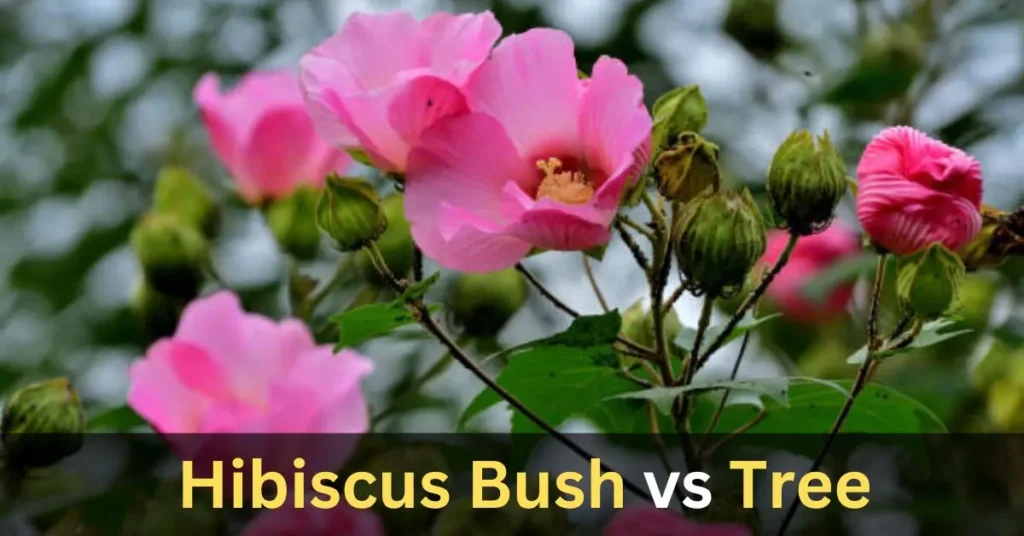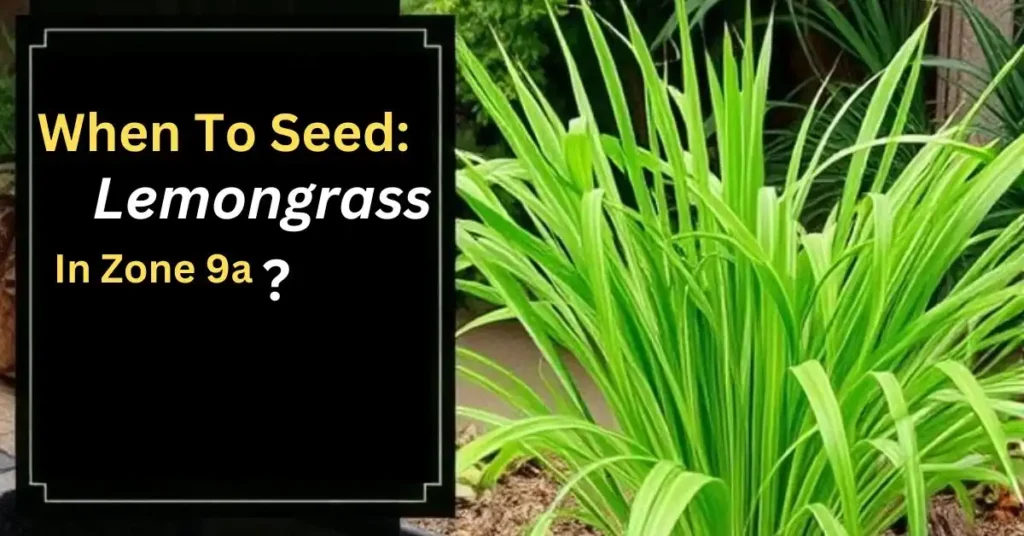When comparing Hibiscus Bush and Tree, it’s important to think about your willingness to handle maintenance. The primary distinction between the two is their unique shapes. A Hibiscus Bush typically grows full and round, offering a natural, compact look, while a Hibiscus Tree has a tall trunk that is often pruned to make room for blooms atop.
Both the bush and the tree produce beautiful flowers, but the unique benefits of each are tied to their specific growth patterns. If you’re after a more sculpted, elegant design for your garden, the tree could be the right choice. However, the bush offers a fuller, livelier display that’s easier to manage in terms of maintenance.
In your garden, it’s essential to understand how each type will grow. A Hibiscus Tree offers a more dramatic, vertical appeal, reaching higher and providing a striking presence with its blooms near the top. On the other hand, the Hibiscus Bush grows in a more spread-out, fuller fashion, filling up space with its vibrant flowers.
Both offer stunning blooms that produce beauty in any setting, but the choice ultimately depends on what you’re willing to do in terms of care and the visual aesthetic you’re aiming for. Be sure to consider these aspects when deciding which one to introduce into your garden space.
Key Points
| #- | Feature | Hibiscus Bush | Hibiscus Tree |
|---|---|---|---|
| 1- | Size | Smaller, usually up to 6 feet tall | Larger, can grow over 10 feet tall |
| 2- | Shape | Compact, bushy growth | Tall, tree-like growth |
| 3- | Growth Habit | Dense, full borders or hedges | Can be a focal point, often single trunk |
| 4- | Sunlight Requirements | Prefers full sun (6-8 hours) | Prefers full sun (6-8 hours) |
| 5- | Soil Type | Well-draining, loamy soil | Well-draining, loamy soil |
| 6- | Watering | Regular watering required, but tolerant to drought | Requires regular watering, especially in dry climates |
| 7- | Flowering Duration | Flowers last 1 day | Flowers last 1 day |
| 8- | Flower Size and Type | Typically smaller, colorful blooms | Larger, vibrant flowers |
| 9- | Maintenance | Low to moderate; trimming to maintain shape | Requires occasional pruning to maintain shape |
| 10- | Common Use | Border, hedge, small garden feature | Focal point, landscape accent |
Hibiscus Bush vs Tree: What Are the Differences?
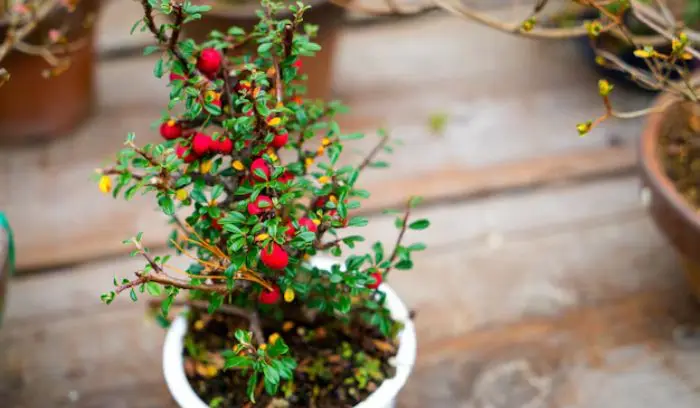
A Hibiscus Bush is shorter, typically growing 3 to 6 feet tall, with many stems forming a rounded and dense shape. It requires minimal pruning and is great for hedges or garden borders.
A Hibiscus Tree has a single trunk, reaching 6 to 10 feet or more, and needs regular pruning to maintain its umbrella-like canopy of flowers at the top. While both offer beautiful blooms, the tree provides a more decorative and striking appearance.
| Feature | Hibiscus Bush | Hibiscus Tree |
|---|---|---|
| Growth Habit | Many stems, rounded shape | Single trunk, canopy of flowers |
| Height | 3 to 6 feet | 6 to 10 feet or more |
| Shape | Compact, dense, outward growth | Tall with umbrella-like top |
| Maintenance | Minimal pruning needed | Needs regular pruning |
| Use in Landscaping | Great for hedges, borders, fillers | Decorative, used in containers, patios |
Growth Habit: How Hibiscus Bushes and Trees Develop
Hibiscus bushes grow with many stems starting from the base of the plant. This gives them a rounded, bushy shape that spreads out as they grow, filling up space in the garden.
These bushes grow full and dense, offering colorful flowers and thick leaves with minimal effort. They are perfect for creating hedges, borders, or filling in empty spots in your garden, offering great coverage and a fuller look without needing much trimming.
On the other hand, a Hibiscus tree grows quite differently. It has a single trunk, which is pruned and trained to grow straight. As the tree grows, it develops height and a tall structure, with flowers forming at the top, creating an umbrella-like appearance.
A Hibiscus tree can become a decorative centerpiece in your garden, adding vertical interest and elegance. However, it does require regular pruning to maintain its shape, and the lower branches need to be removed to keep the trunk clean.
Height: How Tall Do Hibiscus Bushes and Trees Grow?
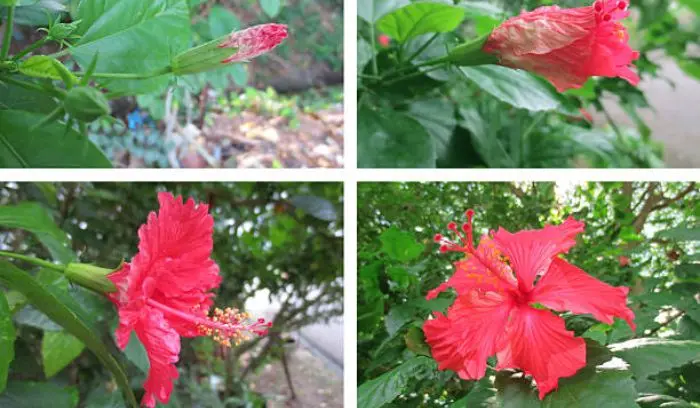
When considering hibiscus for your garden, one of the first things you’ll notice is the height difference between bushes and trees. Hibiscus bushes are generally shorter, growing to about 3 feet to 6 feet tall.
This makes them perfect for smaller spaces or areas where you want a plant that stays low to the ground. They won’t dominate surrounding plants or obstruct your view.
These bushes are especially great when planted along a walkway, fence, or border, as their manageable size adds color and texture without taking up much vertical space.
On the other hand, hibiscus trees can grow much taller, reaching up to 10 feet in the right conditions.
This added height makes them an excellent choice for larger areas, where you need something that will truly stand out and become a focal point. Their tall trunk and flower-filled canopy add a striking and dramatic look to any garden, helping to break up the flatness of the space.
If you have a larger garden, a hibiscus tree can provide structure and a sense of depth, serving as a centerpiece in the middle of a garden bed or even in a pot on your patio.
Shape: How Do Hibiscus Bushes and Trees Differ in Shape?
When it comes to hibiscus, the shape of the plant can make a big difference in how it fits into your garden. Hibiscus bushes tend to have a compact, rounded form, growing outward from the base. This creates a full, bushy look that is perfect for forming hedges or borders.
Their ability to fill in spaces makes them ideal for planting close together to create a solid, dense line of greenery. These bushes stay low to the ground, offering a fullness and lushness that adds depth and texture to your garden.
With their balanced, even shape, they’re easy to maintain and can be trimmed to control their size or shaped in a certain way if needed.
On the other hand, the hibiscus tree has a different shape altogether. It grows with a tall, clear trunk and gathers leaves and flowers at the top, giving it a formal, structured look. The tree’s canopy can resemble an umbrella, especially when it’s in full bloom, making it an eye-catching feature.
To keep the tree’s shape, you may need to prune the lower branches to keep the trunk clean and help it grow upward. Over time, this results in a strong, top-heavy canopy, which makes it a decorative focal point in your garden, serving beautiful and practical purposes.
Maintenance: How Do You Care for Hibiscus Bushes vs Trees?
Caring for hibiscus bushes is relatively simple, thanks to their low-maintenance nature. One of the biggest advantages of a hibiscus bush is that it grows naturally in a rounded shape, so you don’t need to worry much about pruning or trimming.
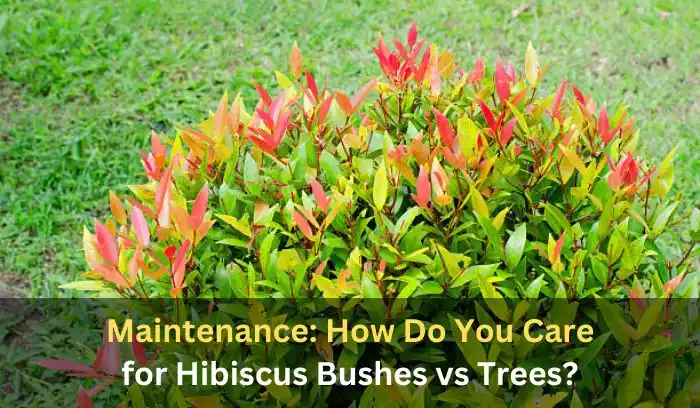
The bush will continue blooming with minimal effort on your part. You can shape it a bit if you like, but it’s not something you need to do often. With just a little attention, your hibiscus bush will stay healthy and beautiful throughout the year.
On the other hand, hibiscus trees require a bit more regular care. To keep the trunk clear and the canopy neat, you will need to prune the lower branches from time to time. If you don’t, the tree may lose shape and start looking messy.
Regular pruning helps the tree maintain its height, structure, and that clean, single-trunk look that makes it so stunning. While shaping the tree is necessary, it’s not difficult and just requires consistent attention to keep it looking its best.
Use in Landscaping: Where to Use Hibiscus Bushes and Trees
Hibiscus bushes are a fantastic option for adding beauty to your garden. They are perfect for creating hedges, borders, or filling in garden spaces with their full and rounded shape. You can line a walkway or plant them along a fence to add a touch of color.
If you’re looking to create a colorful hedge, consider planting multiple bushes together in garden beds. Their low-growing nature makes them easy to fit into any garden design, offering a pop of color without overwhelming the space.
On the other hand, hibiscus trees bring a more formal and decorative look to your landscape. Their impressive height and structure make them ideal as focal points in gardens or on a patio.
Planting them in containers allows you to move them around, creating vertical interest in different areas. The tree’s ability to draw the eye upward adds depth and makes your space feel more layered and interesting. Whether planted in the ground or moved in containers, hibiscus trees bring a striking visual element to any garden.
What Are the Similarities Between a Hibiscus Bush and a Tree?
Both hibiscus bushes and trees share many similarities, starting with their stunning large, colorful flowers. These vibrant blooms add beauty to any garden and are one of the main reasons people love these plants.Both hibiscus types need comparable care to grow well. They do best in warm climates and grow at a comparable rate. Whether it’s a bush or a tree, both need the right amount of sunlight and water to flourish.
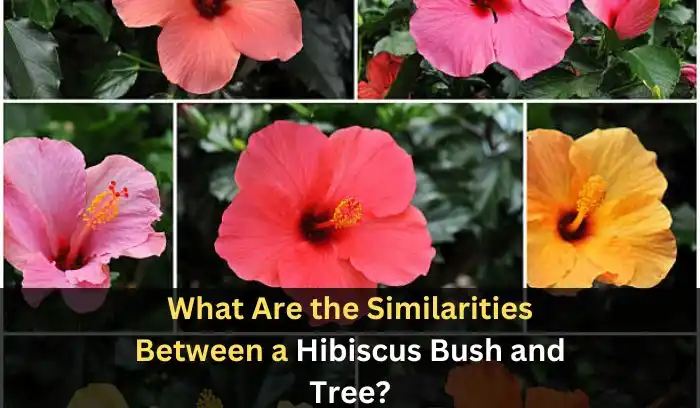
The key difference between them lies in how they are pruned and shaped. A bush tends to have a fuller, more compact look, while a tree grows taller with a clear trunk. Despite this, the care they need is quite alike, and their flowers remain equally beautiful in both forms.
Flowering: Both Produce Beautiful Hibiscus Flowers
Whether it’s a hibiscus bush or a hibiscus tree, both types of plants produce large, vibrant flowers that are almost identical. These stunning blooms come in various shades of pink and orange, and they can grow big and bold.
People love having these flowers in their gardens, as they bring a splash of color and vibrancy to any space. One of the main reasons why hibiscus plants are so popular is their ability to brighten up a garden throughout the season.
The flowers of both the bush and tree bloom in sunny weather, adding life to your outdoor space. Whether the plant is taller or rounder, the flowers themselves remain the same — bold, bright, and eye-catching.
Plus, they attract pollinators like bees and butterflies, making the garden even more lively and colorful. With their gorgeous, vibrant blooms, hibiscus bushes and trees are a must-have for anyone looking to add beauty to their garden.
Care Needs: Both Require Similar Care
Taking care of a hibiscus bush or a hibiscus tree is simple and similar. Both plants need plenty of sunlight to thrive, so make sure they get at least six hours of full sun each day. You’ll need to place them in the right spot where they can soak up the sunlight.
They also prefer well-drained soil. The soil should allow water to drain properly, as hibiscus does not like to sit in excess water. Be careful with regular watering, ensuring you don’t overwater them.
In addition to sunlight and water, both hibiscus bushes and trees benefit from feeding with a balanced fertilizer. This helps enhance plant health and encourages more blooms. Pests, like aphids and other insects, might visit your hibiscus.
It is essential to monitor these pest issues closely and address them without delay. Following a routine of proper care for both the bush and the tree will keep your plant happy and blooming beautifully.
Varieties: The same Varieties Can Be Bushes or Trees
When you choose hibiscus plants for your garden, you get options that can transform your outdoor space in a unique way. Some types of hibiscus can grow either as a bush or a tree, depending on how you train and prune them.
The difference lies in the way the plant is cared for — if left to its own devices, the plant will naturally grow with multiple stems, forming a bush. However, with careful pruning, you can shape the plant into a tree with a single trunk and vibrant flowers on top.
This flexibility in growth makes hibiscus a wonderful choice for gardeners who love to experiment with garden design. Whether you prefer a bushy look or a more structured tree shape, the same variety can offer both.
The growth potential of these plants is impressive, and with proper care for them, you can enjoy their beautiful flowers in whichever form suits your garden. This is where the beauty of hibiscus truly lies — you are never locked into just one appearance, giving you more freedom to create the perfect garden layout.
Climate: Both Thrive in Warm Climates
Whether you have hibiscus as bushes or trees, they both flourish in warm weather. These plants absolutely thrive when exposed to sunshine, basking in the sun and soaking up the warmth.
If you live in a cooler climate or experience cold weather, it’s essential to protect your hibiscus from the elements, especially during the winter months. You can keep them indoors or in pots that allow you to move them to warmer spots, ensuring they stay healthy and continue blooming.
In order for your hibiscus to grow at its best, it needs the right conditions: plenty of sunlight, moderate humidity, and protection from frost. Even if you’re growing them in containers, these plants will still perform beautifully as long as they have the right environment. So, whether you’re growing a bush or a tree, the key to success is providing that steady warmth and sunshine that makes them feel right at home.
Growth Speed: Both Grow and Bloom at Similar Rates
When it comes to hibiscus, whether you choose bushes or trees, both will grow and bloom at a similar speed. The beauty of these plants is that they follow the same growth rate, maturing at almost the same time each year.
During the warmer months, you’ll notice their stunning flowers beginning to appear, usually in late spring or early summer. The plant follows a natural cycle, blooming consistently when the weather warms up.
No matter which form of hibiscus you decide to grow, you can count on them to maintain a steady pace of growth. As long as you provide them with the right care, both bushes and trees will thrive and deliver plenty of flowers throughout the summer, without any drastic differences in how quickly they develop.
Hibiscus Bush vs Tree: Which One to Choose?
When choosing between a hibiscus bush or tree, it’s important to think about how you want to use it in your garden. Both forms are equally beautiful and will provide you with the same vibrant flowers.
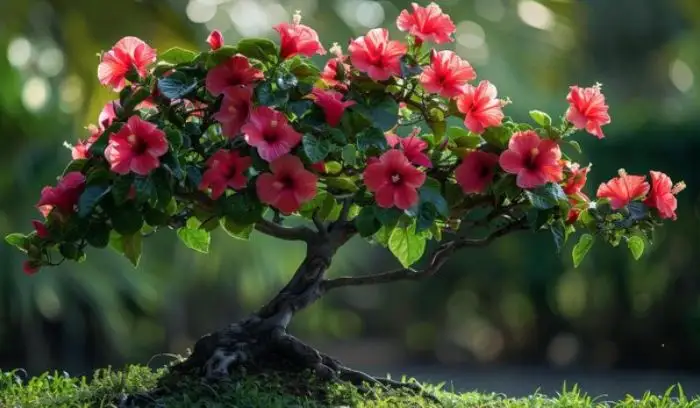
However, their size and shape can serve different purposes depending on the look you’re going for. A bush might be better for smaller spaces or if you want a fuller, more compact plant, while a tree could add height and structure to your garden design.
Whether you go for a bush or a tree, both will thrive and bring beauty to your space. The key is to consider the size, shape, and how each form will fit with the rest of your garden. Each has its unique qualities, and choosing the right one can elevate your outdoor area in different ways.
Hibiscus Bush
A hibiscus bush is a great choice if you want a plant that can fill out space in your garden. It works particularly well in borders or planted along a fence, adding beauty without taking up too much room.
This plant naturally grows full, giving a lush, vibrant look to your garden. Plus, it doesn’t require much pruning or shaping, making it perfect for busy gardeners who want a plant that’s easy to care for while still offering plenty of color.
With a height of 3 to 6 feet, bushes are perfect for adding a lush touch without overshadowing other plants or structures. Whether you’re aiming to add a pop of color or fill empty corners, a hibiscus bush can create a beautiful, low-maintenance focal point in your garden.
Hibiscus Tree
If you want something more formal and decorative, the hibiscus tree is a great option. With its tall trunk and a beautiful canopy of flowers, it will stand out in any garden. The tree adds height and can become a focal point, especially if you place it in an area where it can truly shine. The structured shape and elegance of the tree make it ideal for patios or large containers.
The hibiscus tree requires a bit more maintenance since you’ll need to prune it regularly to keep its clean and tall appearance. However, the effort is well worth it if you’re looking for an ornamental plant that will really grab attention. It will bloom beautifully, offering an amazing look in your garden. Whether you choose the tree for its structure or elegance, it will certainly enhance your outdoor space.
Hibiscus Bush vs Tree: Pros and Cons
| Hibiscus Tree | Hibiscus Bush |
|---|---|
| When it comes to adding a touch of tropical beauty to your landscape, the hibiscus tree stands out. | The hibiscus bush offers a low maintenance alternative. |
| These trees can grow up to eight feet tall, offering an impressive visual. | Known for being cold hardy, they are ideal for areas with cooler climates. |
| With dark green leaves, they add a lush and vibrant feel, and you can even prune them to take on a more shrub-like appearance. | These bushes are often used as hedges, providing privacy while requiring minimal care. |
| However, they are susceptible to strong winds, and their branches can easily break off in harsh conditions. | Although they are deciduous, meaning they bloom only during certain seasons, they are easy to tolerate and can handle pruning well. |
| Despite these challenges, the hibiscus tree remains a great choice for anyone looking to make a bold statement in their garden. | Seasonal blooms might be a trade-off, but the bushes still shine with their adaptability and the ability to withstand various weather conditions. |
Ideal Growing Conditions for Hibiscus Bushes and Trees
Key Growing Conditions for Hibiscus
Hibiscus plants thrive in full sun and need exposure to sunlight for most of the day. Whether you’re growing them as bushes or trees, they require well-drained, fertile soil that’s rich in organic matter for optimal growth. Ideal temperatures range from 65-85°F, and it’s important to protect them from frost or strong winds.
Hibiscus can’t stand the cold, so if you’re growing tropical varieties, it’s best to bring them indoors during the winter months. For hardy hibiscus, they can survive colder temperatures but may die back in harsh winters, coming back in spring. Additionally, these plants need adequate space to spread out and grow properly.
Watering and Fertilizing Hibiscus
To keep your hibiscus healthy, make sure the soil stays consistently moist, but be careful not to overwater as it can lead to root rot. Regular watering helps maintain the ideal moderate moisture levels. A balanced fertilizer applied during the growing season encourages healthy growth and vibrant blooms.
Depending on your location, you might need to adjust care for hot climates or areas with partial shade. Whether you have hibiscus in your garden or in a greenhouse, meeting these growing conditions will ensure they bloom beautifully and thrive year after year.
Hibiscus Bush vs Tree: Which is Better for Small Spaces?
Choosing the Right Hibiscus for Small Areas
If you’re looking to add a hibiscus to a smaller area, both hibiscus shrubs and hibiscus trees can be great options depending on the space and the variety. For small spaces, compact varieties such as the Purple Pillar hibiscus work well. This variety is only 2-3 feet wide, making it a perfect fit for tight spots or as part of a dense screen.
You can also plant these hibiscus shrubs in containers with drainage holes, allowing flexibility and easy movement. Hibiscus trees, on the other hand, can also fit into smaller spaces like patios, balconies, or even indoors near a window, giving you full control over the plant’s environment.
Additionally, you can consider tree-form shrubs like hydrangeas or Rose of Sharon (a type of hardy hibiscus), which can be grown as small trees in places like courtyards, intimate gardens, or small yards.
Both hibiscus trees and shrubs require full sun and warmer temperatures, and their growth can be affected by your local climate, so be mindful of their cold hardiness and heat tolerance. Keep in mind that while they can tolerate partial shade, they might flower less. The right plant will depend on the space you have and how much control you want over the growing conditions.
Hibiscus Bush vs Tree: Lifespan and Growth Rate
Lifespan
When considering the lifespan of hibiscus plants, it largely depends on the variety. Hardy hibiscus plants can live for a remarkable 20–50 years, while the lifespan of tropical hibiscus plants typically ranges between 5–10 years. However, some older garden varieties of tropical hibiscus have been known to live for more than 50 years if properly cared for.
Growth rate
As for the growth rate, perennial hibiscus plants tend to grow quickly, reaching their mature height in 2–3 years. Once they reach their desired height, they return to that size each year, thriving with ample moisture. These plants grow best when their needs for water and space are met.
Hibiscus Bush vs Tree: Container Gardening Tips
When growing a hibiscus bush or tree in a container, it’s important to choose a lightweight, well-drained potting mix rich in nutrients and humus. You can use a soilless mix or mix materials like peat moss, vermiculite, coco coir, and perlite to create the ideal environment for your plant. If the soil is too compact, adding sand can help loosen it. Ensure your pot has a drainage hole to avoid root rot and maintain moist soil without letting it become soggy.
During warm weather, water your hibiscus daily, but reduce watering as the temperature drops, especially during cool weather and in winter, only watering when the soil is dry.
When it comes to feeding your plant, choose a fertilizer high in nitrogen and potassium to promote healthy leaves and flower buds. You can apply a slow-release fertilizer at planting time, then use a water-soluble fertilizer every two weeks when flower buds start appearing.
Place your hibiscus in bright sunlight after it adjusts in shade for the first few weeks. Keep the temperature warm enough to ensure healthy growth, and when transplanting, handle the root ball carefully without disturbing the roots too much. This way, your hibiscus will thrive in a container setup, both as a bush or a tree.
Can You Grow a Hibiscus Bush or Tree Indoors?
Yes, you can successfully grow a hibiscus bush or hibiscus tree indoors, as long as you provide the right conditions. These tropical plants are known for thriving in bright light, so placing them near a sunny window with plenty of indirect sunlight is key.
Since hibiscus plants require warmth, maintaining a warm room temperature and protecting them from cold drafts will help them stay healthy.
Additionally, humidity plays a big role in their growth. If the air is too dry, you can use a humidifier to ensure a high humidity level, which is ideal for their well-being. Regular watering is essential, but make sure the soil stays moist without becoming soggy.
Choosing suitable varieties, like compact indoor hibiscus types, will help ensure that your plant stays the right size for your space, and with regular watering, it will continue to thrive indoors.
Common Pests and Diseases in Hibiscus Bushes and Trees
Aphids and Mealybugs: Common Pests on Hibiscus
Hibiscus bushes and trees often face challenges from pests like aphids, tiny sap-sucking bugs that cause distortion in the new growth and buds, and can also transmit diseases.
Treatment options include using insecticidal soap or water, or introducing beneficial insects like ladybugs to control the problem. Mealybugs, which also suck sap from stems, cause the foliage to become yellow and black over time. These pests can damage your hibiscus if not addressed.
Spider Mites and Whiteflies: Other Common Pests
Another pest affecting hibiscus is the spider mite, which feeds on the underside of leaves, creating silvery leaves and visible webbing and droppings. Whiteflies, small white insects, cause yellowing, curling, and distortion of leaves and flowers. They also leave behind a sticky substance called honeydew, which can attract ants and lead to fungal growth on the plant.
Scale Insects, Fungus Gnats, and Fruit Flies
Scale insects appear as bumps on stems, draining the plant’s vitality, which leads to leaf drop and stunted growth. Fungus gnats and fruit flies thrive in moist soil, so it’s best to allow the soil to dry between waterings. You can also use sticky traps to control these pests and prevent further damage.
Diseases: Hibiscus Blight and Leaf Spot
Diseases like hibiscus blight, also known as gray mold, and leaf spot can significantly affect the plant’s health. These diseases, caused by fungi, harm the flower buds and hinder photosynthesis, which results in weak growth. To address these issues, use organic fungicides and ensure proper air circulation around the plant to promote healthy growth.
FAQs
A hibiscus can be both a woody shrub or a small tree, depending on the variety and care. Known for its green, semi-glossy leaves and brightly colored, trumpet-shaped flowers, the plant blooms in vibrant colors. The showy filament extends from the center of the flower, enhancing the bloom.
Whether it grows as a bush or a tree depends on the species and environment, but both forms feature stunning flowers that add beauty to any garden.
To identify a hibiscus, look at the color of the flowers. Hibiscus blooms come in colors like red, pink, lavender, and white, and sometimes have a contrasting eye in the center. Perennial hibiscus species do not come in orange or yellow. If you spot these colors, it’s not from this variety. The combination of colors and patterns will help you distinguish between different types in your garden.
For a thriving hibiscus, choose a spot with full sun and at least 6-8 hours of direct sunlight daily. The soil should be well-draining, loamy, and have a pH between 6.0 to 7.0. Adding organic matter or compost will improve soil quality and drainage, helping your hibiscus grow and bloom beautifully.
The life cycle of a hibiscus flower begins with flower opening, which lasts for some time until it reaches full bloom. Afterward, the petals start folding, signaling the flower’s closure. Within a few hours, it enters the final stage of abscission, where the petals fall off, completing the flower’s cycle.
Hibiscus flowers typically last one day, closing in the evening and falling off the next. To keep the plant tidy, it’s important to remove spent blooms. For those growing hibiscus indoors or in a mild climate, pruning the shrub by one-third in late winter or early spring helps maintain its health and encourages new growth. Regular care ensures a continual display of vibrant flowers.
Conclusion
Both the hibiscus bush and hibiscus tree bring something special to your garden. If you’re looking to create dense, full borders or hedges, the bush is a perfect choice. On the other hand, the hibiscus tree stands out by adding height and elegance, acting as a striking focal point in your garden.
Both need plenty of sunlight, well-drained soil, and regular watering, growing at the same rate and producing equally beautiful flowers. The decision to select either a bush or a tree is contingent upon the aesthetic and structural outcome you wish to attain. Either way, you’ll enjoy a stunning plant filled with vibrant blooms that bring the feeling of tropical blooms to your garden.
See Also:
Peony vs Azalea: Which Plant is Best for Your Garden?
Can You Apply Too Much Preen to Your Plants? 5 Risks
How Long Does It Take to Grow Bell Peppers in Minnesota? A Complete Guide

